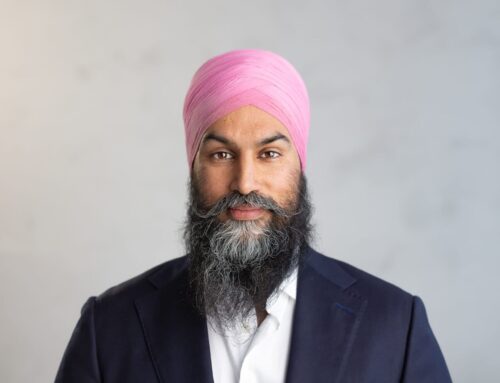Content note: this episode addresses femicide.
“December 6, 1989 was a terrible moment that became a transformative movement,” writes Canadian Women’s Foundation President and CEO Paulette Senior in The Toronto Star. “Every year on December 6, we need to revive the momentum anew. Advocates made sure that the 1989 massacre led to stricter firearm laws and new anti-violence efforts. We need the same energy in 2022 to end abuse in sports and male-dominated sectors, build safety for Indigenous women, Black and racialized women, women with disabilities, and others at elevated risk, and reverse rising rates of femicide, family violence, and sexual assault we’ve seen in Canada over the last few years. There is never a year when Dec. 6 should not rejuvenate our movement.”
Corinne Ofstie (she/her), Director of Strategic Initiatives at the Association of Alberta Sexual Assault Services (AASAS), addresses the issue of femicide today. Amongst her other work, Corinne is a member of the Rebuilding Lives Committee for the Canadian Women’s Foundation and an Expert Advisory Panel member of Canadian Femicide Observatory for Justice and Accountability.
Corinne is a registered social worker with expertise working as a cross-sector coordinator within community, system and government organizations in both the sexual and domestic violence services sectors. In her role with AASAS, Corinne works to achieve the goals and objectives of numerous special projects including the Healthier and Safer Alberta Workplaces project which includes an anti-workplace sexual harassment awareness campaign and training. Among her many achievements, Corinne co-chaired the provincial Collaborative Justice Response to Sexual Violence Committee and was a member of the Gender Equality Network of Canada from 2017 to 2020. In 2018, Corinne was awarded Avenue Magazine’s #Top40Under40.
Transcript
00:00:03 Andrea
In memory of the murder of 14 women on December 6, 1989, in Montreal.
In the tragedies that keep happening every year.
What can we do to end femicide in Canada?
00:00:16 Andrea
I’m Andrea Gunraj at the Canadian Women’s Foundation.
Welcome to Alright, Now What?, a podcast from the Canadian Women’s Foundation. We put an intersectional feminist lens on stories that make you wonder “Why is this still happening?” We explore systemic roots and strategies for change that will move us closer to the goal of gender justice.
The work of the Canadian Women’s Foundation and our partners takes place on traditional First Nations, Métis, and Inuit territories. We are grateful for the opportunity to meet and work on this land. However, we recognize that land acknowledgements are not enough. We need to pursue truth, reconciliation, decolonization, and allyship in an ongoing effort to make right with all our relations.
00:01:00 Andrea
“December 6, 1989 was a terrible moment that became a transformative movement”, writes Canadian Women’s Foundation President and CEO Paulette Senior in the Toronto Star. “Every year on December 6th we need to revive the momentum anew.” She goes on to say “advocates made sure that the 1989 massacre led to stricter firearm laws and new anti-violence efforts. We need the same energy in 2022 to end abuse in sports and male dominated sectors. Build safety for Indigenous women, Black and racialized women, women with disabilities and others at elevated risk. And reverse rising rates of femicide, family violence and sexual assault we’ve seen in Canada over the past few years. There is never a year when December 6 should not rejuvenate our movement.”
Though the 16 days of activism against gender-based violence is over, though the December 6 National Day of Remembrance and Action on Violence Against Women has passed, we still have much to do to end this preventable violence. Many of us are mindful of and mourning the recent Winnipeg police announcements of charges laid against a man for the murder of four Indigenous women. A man linked to white supremacist ideology. Many of us are mindful of in mourning these rising rates of gender-based violence, the impact of which will reverberate for years.
Corinne Ofstie, Director of Strategic Initiatives at the Association of Alberta Sexual Assault Services, joins us to address the issue of femicide. Amongst her other work, Corinne is a member of the Rebuilding Lives committee for the Canadian Women’s Foundation and an expert advisory panel member of the Canadian Femicide Observatory for Justice and Accountability.
00:02:47 Corinne
My name is Corinne Ofstie. My pronouns are she and her. I’m a first generation and uninvited settler on Treaty 7 Blackfoot territory in Calgary, Alberta. That’s where I was born and raised, and that’s where I’m speaking to you now from. I’ve grown passionate as an advocate, in particular for systems change. I’m really passionate about collaboration and collective impacts to end sexual violence.
I am a social worker, and my practice of social work has been with systems, with governments, with organizations and other stakeholders. I’ve worked for about 11 years as a cross sector coordinator in Alberta in the domestic and sexual violence services sectors and nine years with the anti-sexual violence sector, the Association of Alberta Sexual Assault Services- a variety of projects and initiatives including public awareness campaigns, training initiatives and the prevalence of child sexual abuse and sexual assault in Alberta study.
00:03:49 Andrea
We see it everywhere in the news- femicide is on the rise. Can you explain what femicide is and what the data says about it?
00:03:57 Corinne
Well, our association you know we participate in the Canadian Femicide Observatory for Justice and Accountability, which is a group of researchers and community-based practitioners who are working to track and record and analyze data on femicide in Canada. We describe femicide as the gender-based killing of women and girls in Canada and that is primarily, but not exclusively, by men.
When we say it’s on the rise, when we look at the data around femicide in Canada, you know, we can see that there was a 26% increase in femicide pre-pandemic and post-pandemic. In 2021, there was 173 women and girls killed by violence, most often by men- 89% of the time. And most often, in a current or because of a current or former intimate partner. Already in 2022, between January and October, shockingly, 144 women and girls have been killed by violence in Canada. 93% of the time they’ve been killed by men.
When we think about like who is targeted by femicide, we can see that most often they are killed by men. Most often the relationships that accuses intimate partner or familial, they’re disproportionately racialized and Indigenous folks are disproportionately targeted for femicide in Canada. And a greater proportion of these killings are in non-urban areas in Canada compared to urban. In terms of what this means, as we can see, you know, percentage wise when we track and analyze this, that femicide is on the rise and that there are contextual factors within femicide and that the research demonstrates this. And we can also look to that research around the impact of destabilizing events on domestic and sexual violence around the world, and that we can see how an event like the global pandemic and economic crisis is destabilizing and increasing abuses of power and control. We can see that in the rise of domestic and sexual violence, but also in that ultimate form of violence which is femicide.
00:06:07 Andrea
I guess femicide can seem so extreme and individualized. Can you draw the line between femicide and the goal of gender equity in Canada? Why are they so important to hold together?
00:06:18 Corinne
When we consider violence, we can consider it as a pyramid of violence and at the base of the pyramid are root causes, drivers, and systems of oppression – that is colonialism, sexism, racism, ableism- and they embolden and normalize expressions of violence as we move up that pyramid, right, to thoughts and attitudes like misogyny. And up towards verbal expressions of violence like bullying, harassment, sexual harassment, and discrimination, up towards physical expressions of violence, that’s where you see domestic violence and sexual violence.
And we see escalating levels of physical and sexual violence, and we can see that in our Criminal Code. Level 1 sexual assault, Level 2 sexual assault, escalation of violence and then that Level 3 aggravated sexual assault and then at the very top of that pyramid is homicide or femicide. So, making that link between gender equity but the base of that pyramid is sexism and misogyny and when we look at equity and gender equity and equality, that’s the antidote to there. So that’s why it’s important to keep at the forefront, if we want to prevent these escalating levels of violence up to that ultimate form of femicide, we have to target that base of the pyramid and think about how we can prevent violence before it occurs, and gender equality is one of the ways to do that.
00:07:48 Andrea
What would you tell people when they ask what they can do today to end femicide, or at least learn more about it?
00:07:54 Corinne
There’s three things that we can do. One is we can focus on awareness. So, look to those organizations that are doing awareness campaigns. But also, in particular those organizations and collectives that are documenting the issue of gender-based violence in Canada, like the Canadian Femicide Observatory right? What research and data can we leverage to validate what we in community and what people with lived experience know. That there are factors and social identities that are disproportionately targeted for gender-based violence in Canada. And then we need to inform Canadians and policymakers about the scope and problem of gender-based violence in Canada and what they can do to stop it.
We need to enhance access services, supports and safety for women and girls targeted by violence. That’s absolutely essential. And then we need to focus prevention, on prevention efforts. Target prevention efforts towards those root causes, and drivers of violence. We need to promote social norms of safety and equity through campaigns and that’s something that everyone, every Canadian can get involved with.
We have to focus on policies and resources to change structures and systems to promote safe and equitable environments. We need to look at our institutions, our education systems’, right, and how within those systems we can promote safe and equitable environments that protect and create communities of care that are filled with empathy, equity, diversity and inclusion. And then we need to engage men and boys as full beneficiaries of safety equity.
00:09:40 Andrea
Tell us about other projects you’re working on today to end gender-based violence.
00:09:43 Corinne
Right now, I’m really working on our strategic initiative. It’s the provincial initiative in Alberta called Healthier, Safer Alberta Workplaces that has two parts. The first is the provincial public awareness campaign. It’s an anti-sexual violence, anti-workplace sexual harassment prevention and engagement campaign that’s engaging Albertans as leaders in moments that matter. So, moments that support, protect, defend, and address sexual harassment and leveraging the stories of these moments that matter to create positive, safe, and healthy, respectful workplace cultures that help to stop sexual harassment.
And then our second part of that program is, you know, training to increase the skills and confidence of Albertans to effectively address workplace sexual harassment, and we’re really excited about that. We just launched this training curriculum that’s called Engagement Strategies Toward Ending Workplace Sexual Harassment. It’s pretty novel and engaging and showing that we’ve really significantly by the 1200 and 1600% been able to increase participant knowledge for how to address sexual harassment and their confidence to do so. So, we’re pretty excited about that.
00:10:56 Andrea
Alright, now what? I encourage you today to learn about how to respond to the Signal For Help or any sign or signal of abuse and gender-based violence.
Go to signalresponder.ca to sign up and get your action guide and more tools and tips to support survivors of abuse with confidence and competence. And we just released a special signal responder mini course you can do anytime to learn and practice these skills. It’s quick, it’s easy and you can do it on your phone or laptop whenever works for you. Again, sign up at signalresponder.ca and get this guide, get these tools, and get this mini-course today.
00:11:39 Andrea
Please listen, subscribe, rate and review this podcast and share it with others. If you appreciate this content, if you want to get in on the efforts to build a gender equal Canada, please donate today at canadianwomen.org and consider becoming a monthly donor. And thank you for being tireless in your support for gender justice.






